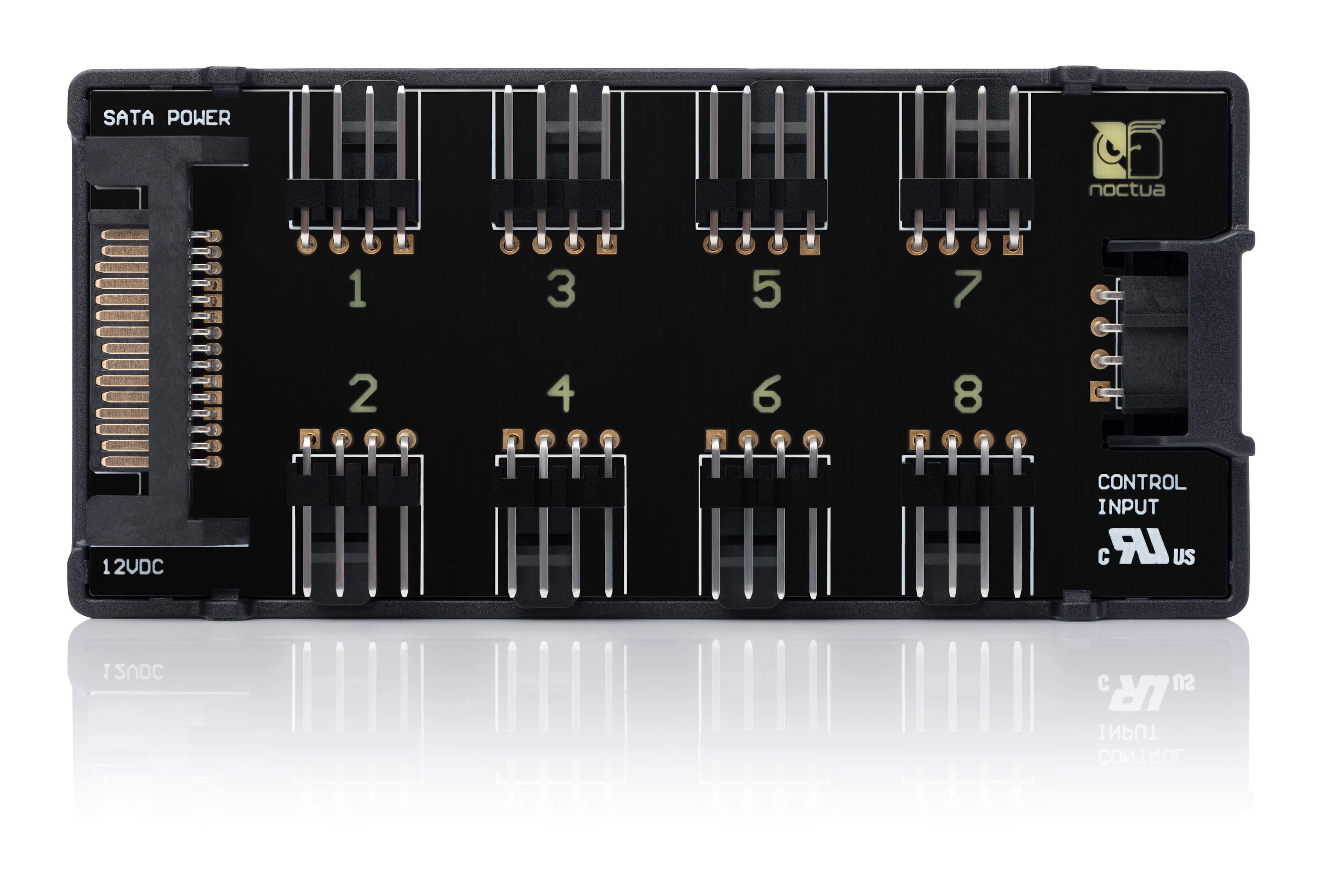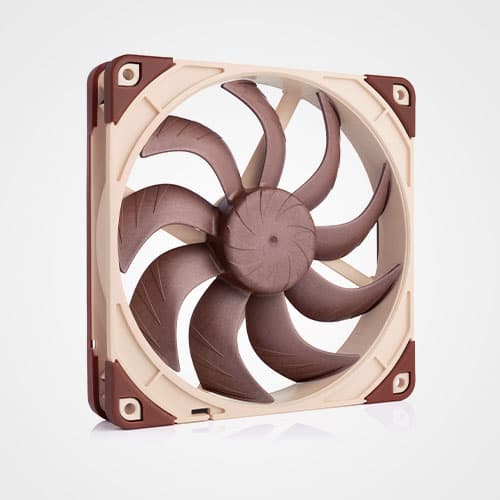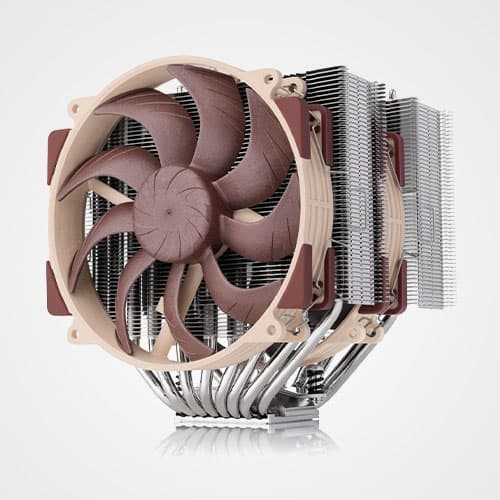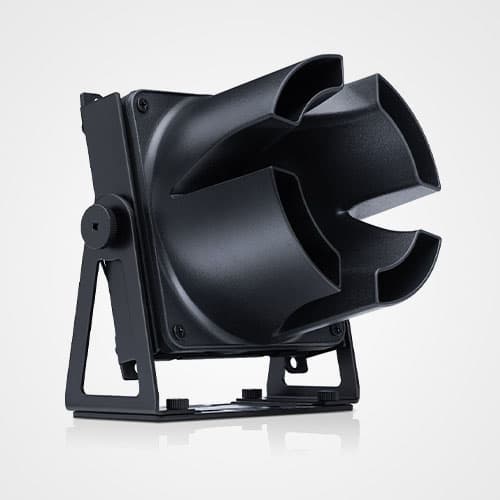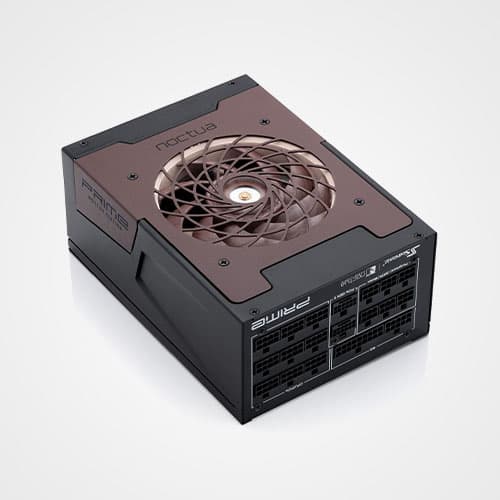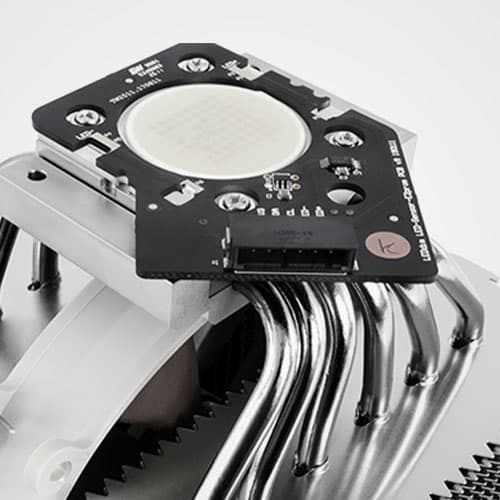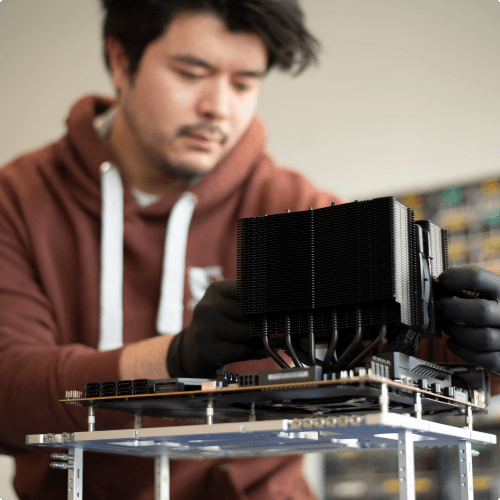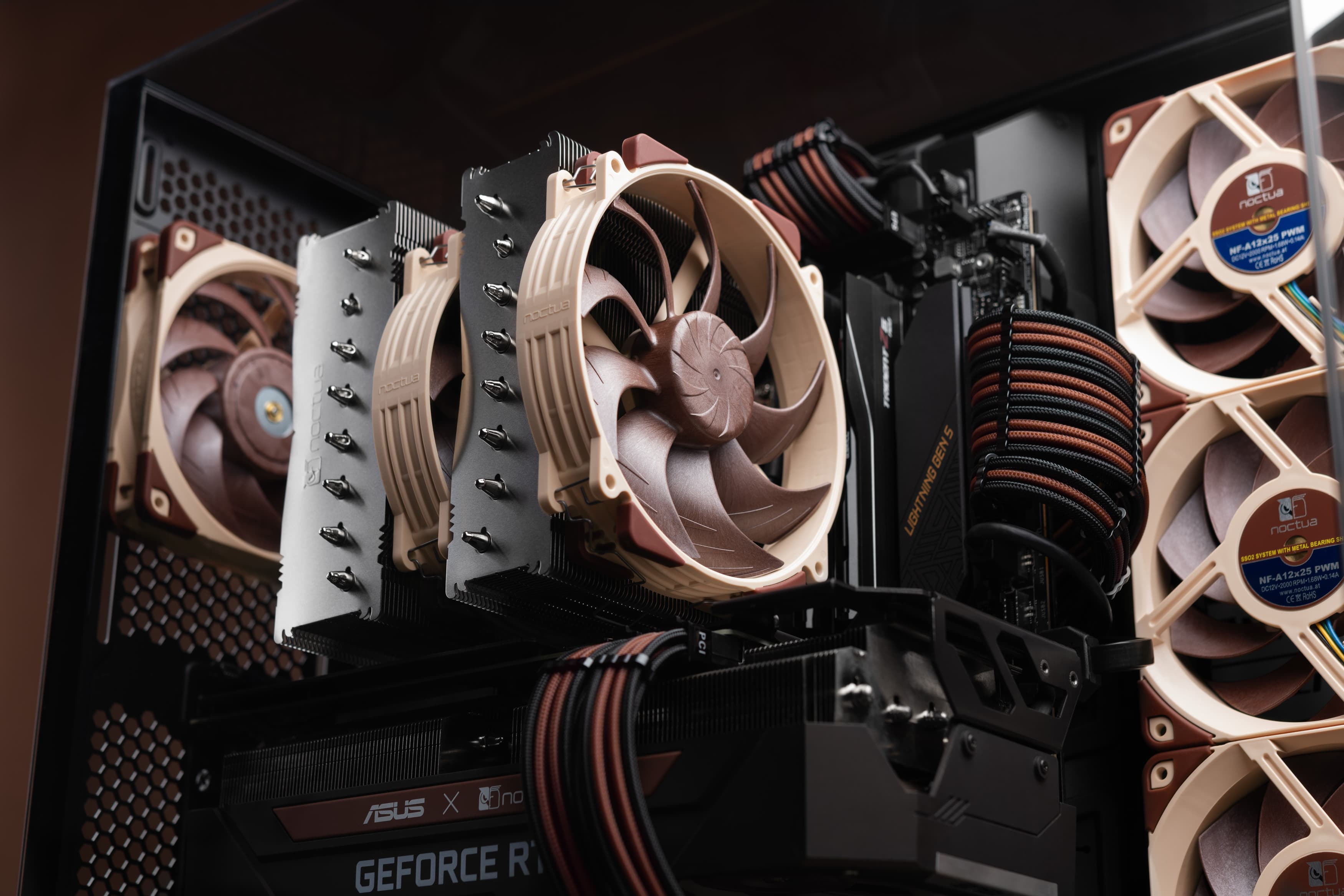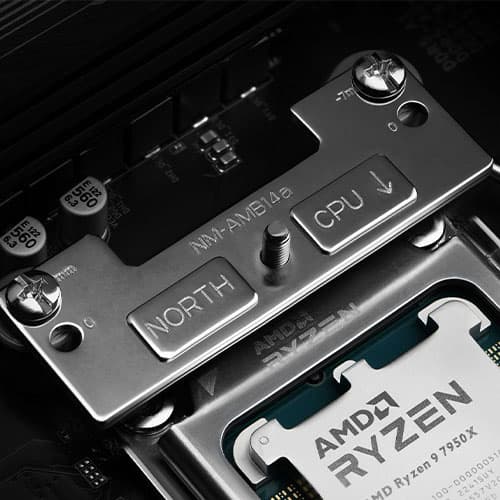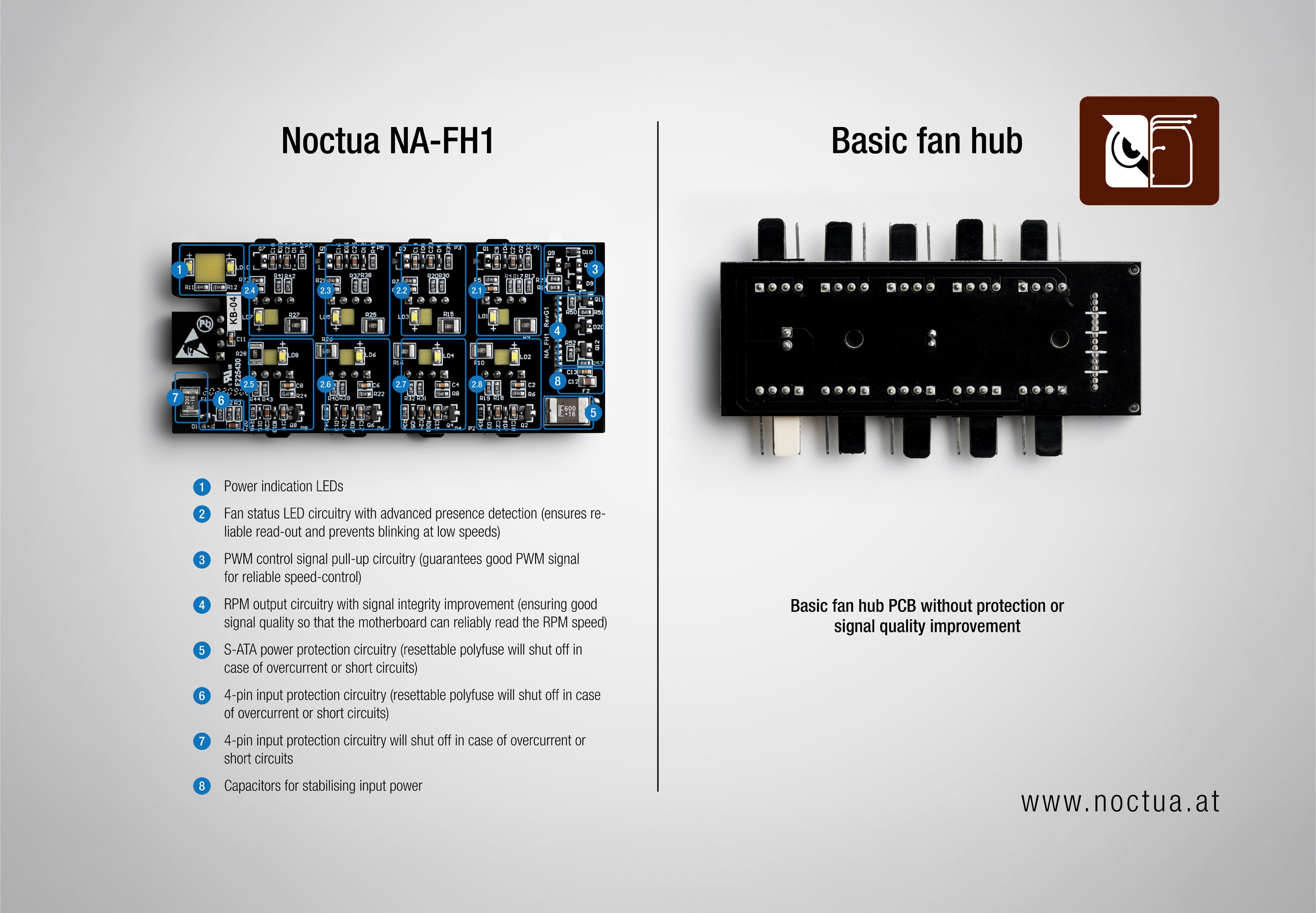NA-FH1 technical backgrounds
NA-FH1 technical backgrounds
Many fan hubs that are available on the market use very basic PCB designs without any protection or circuitry for signal quality improvement. While this helps to reduce cost, there are significant drawbacks with regards to function and safety.
For example, the RPM signal that’s transmitted to the motherboard (or other controllers such as the NA-FC1) may have poor signal quality, especially if the fan is running at low speeds. This can lead to the motherboard reporting wrong speed values or not being able to read the speed signal at all. While the first may lead to undesired fan control behaviour (e.g. the controller slowing the fans down because it mistakenly believes them to be running too fast, then speeding them up again because the values have suddenly dropped, etc.), the latter may cause fan error messages. To prevent this type of issues, the NA-FH1 features an RPM output circuitry with signal integrity improvement that ensures good signal quality and thereby enables the motherboard or controller to reliably read the correct RPM speed.
Due to similar signal quality issues, more basic fan hubs with status LEDs often have issues correctly detecting the speed signal of certain fans when they run at slow speeds. To avoid these issues, each fan port of the NA-FH1 features a dedicated circuitry with advanced RPM signal presence detection that ensures reliable read-out and prevents blinking at low speeds.
Another functional issue that can occur with more basic fan hub designs is that PWM control may not work reliably if the incoming PWM signal is of less-than-ideal quality and multiple fans are connected. This may cause the fans to fluctuate in RPM or not to reach their full speed. To prevent issues like this, NA-FH1 features a PWM control buffer circuitry that guarantees a high-quality PWM signal for reliable speed-control of all the connected fans.
In terms of safety, unprotected fan hubs bear risks in cases of overcurrent or short-circuits on the output ports. In PC environments, there is usually no risk if the hub is powered through a motherboard fan header because most of these headers are protected with fuses. If, however, the hub is powered directly off the power supply through a S-ATA connector or via adaptors, overcurrent or short-circuits on the output ports can have dangerous consequences: Since the overcurrent protection of most PC power supplies is for the entire 12V rail, a lot of current will go through the fan hub and cables before this protection kicks in. For example, depending on the number of 12V rails, a typical 750W PC power supply may be able to provide 30-60A per 12V rail, so depending on the current draw of other components, a significant part of this would go to through the fan hub and the output port where the short-circuit or overcurrent has occurred. As typical fan cables and connectors are not designed to withstand such high currents, this can make the cables and connectors melt within seconds and may even cause sparks or flames.

To rule out that anything like this can happen, the NA-FH1 features protection circuitries on both the S-ATA power input and the 4-pin input (in case it is used in non-PC environments or connected to a PC power supply using an adaptor cable). Thanks to resettable polyfuses, the NA-FH1 will simply shut down in case of overcurrent or short-circuits, protecting the connected fans and surrounding components. Once the overcurrent or short-circuit event is no longer present, the NA-FH1 will automatically re-establish the protection circuit and resume normal operation.
Mentioned products
Explore the products featured in this article.
